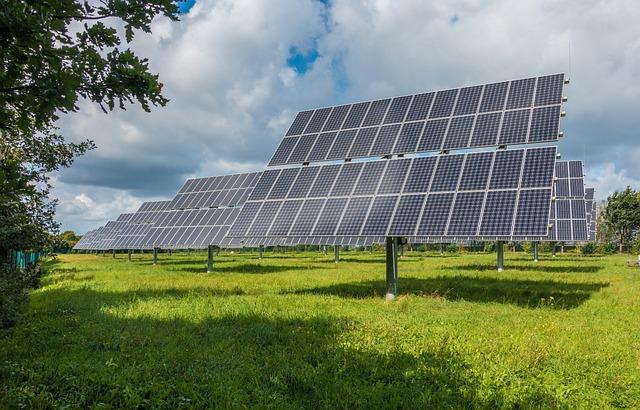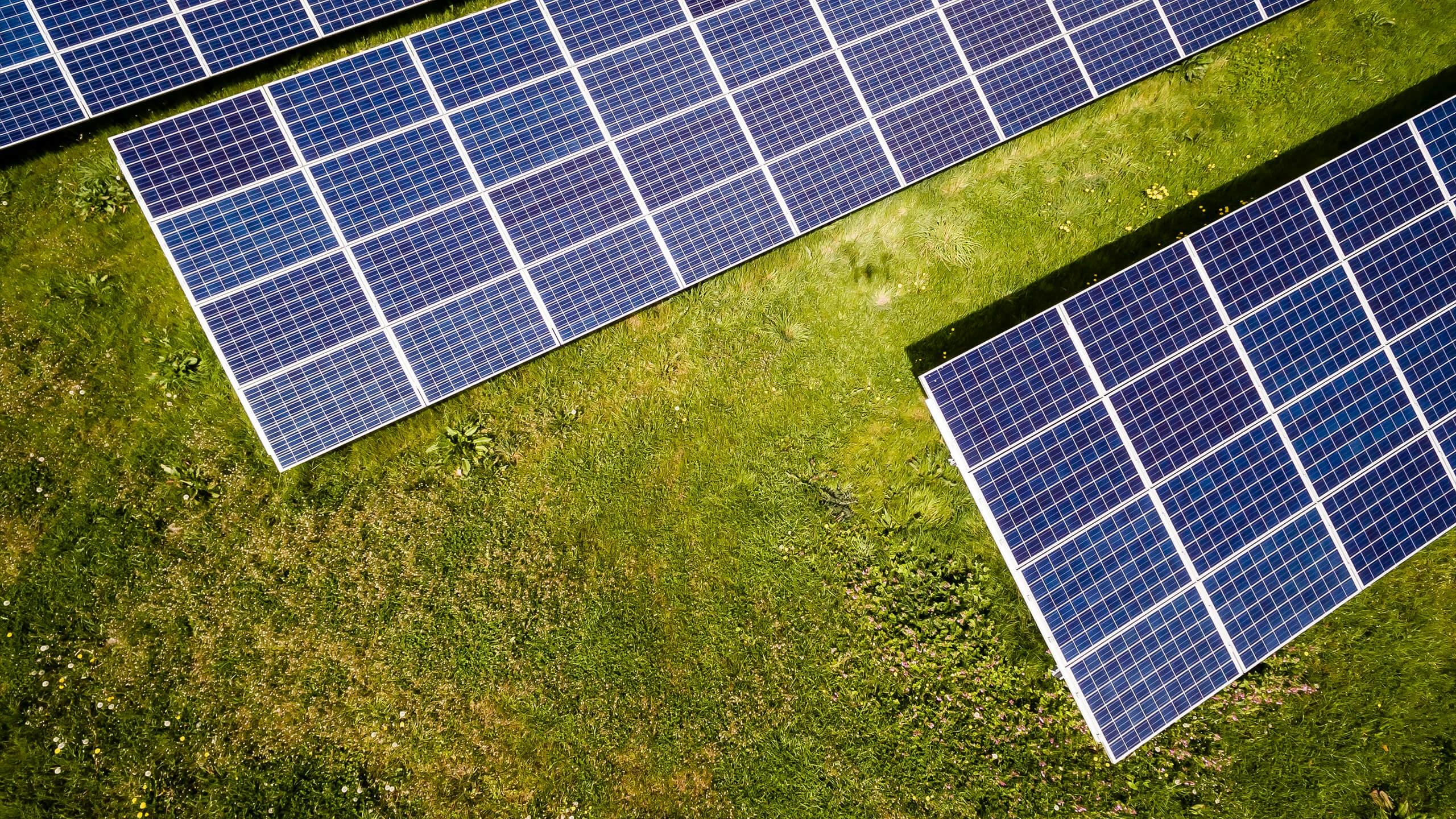In the ever-evolving landscape of renewable energy, solar power continues to shine brightly as a beacon of sustainable progress. This year, the solar manufacturing industry has witnessed a surge of groundbreaking innovations, each pushing the boundaries of what is possible and propelling us closer to a future where clean energy is not just an ideal, but a reality. From cutting-edge materials to advanced production techniques, these innovations are not only enhancing the efficiency and affordability of solar technology but are also redefining the very fabric of how we harness the sun’s abundant energy. Join us as we explore the most significant advancements in solar manufacturing this year, uncovering the ingenious strides that are illuminating the path to a greener tomorrow.
Advancements in Photovoltaic Efficiency: Breaking New Ground
In the past year, the solar industry has witnessed remarkable strides in photovoltaic technology, with innovations pushing the boundaries of what was once thought possible. Among these breakthroughs, perovskite solar cells have emerged as a game-changer, offering potential efficiency rates previously unattainable with traditional silicon-based cells. Researchers have been able to achieve over 25% efficiency, marking a significant leap forward in the quest for sustainable energy solutions. This is achieved through a combination of advanced material engineering and novel manufacturing processes that minimize energy loss and enhance light absorption.
Key advancements include:
- Enhanced tandem cell technology – By stacking different types of solar cells, manufacturers can capture a broader spectrum of sunlight, significantly boosting overall efficiency.
- Quantum dot applications – The integration of quantum dots in solar panels has enabled the capture of more photons, translating to higher energy conversion rates.
- AI-driven manufacturing – Leveraging artificial intelligence to optimize production processes has reduced costs and improved the quality and efficiency of solar cells.
These innovations not only promise to make solar energy more accessible and affordable but also set a new benchmark for the industry’s future. The emphasis on sustainable and efficient energy production is stronger than ever, paving the way for a greener planet.

Revolutionizing Production Processes: Embracing Automation and AI
In the realm of solar manufacturing, the integration of automation and AI has propelled the industry into a new era of efficiency and innovation. This year, several groundbreaking advancements have been at the forefront of this transformation. Automated quality control systems have revolutionized the inspection process by using AI-driven algorithms to detect imperfections in solar panels with unprecedented precision. These systems significantly reduce the time and cost associated with manual inspections, ensuring that only the highest quality products reach the market.
Moreover, the deployment of AI-powered predictive maintenance tools is transforming the way manufacturers approach equipment upkeep. By analyzing data collected from production lines, these tools can forecast potential machinery failures before they occur, minimizing downtime and optimizing operational efficiency. Other notable innovations include:
- Robotic assembly lines that enhance the speed and accuracy of solar panel production.
- Smart supply chain management systems that use AI to optimize inventory levels and reduce waste.
- Advanced data analytics for real-time monitoring and decision-making in manufacturing processes.
These innovations not only enhance the production capabilities of solar manufacturers but also contribute to a more sustainable and resilient energy future.

Sustainable Materials: Paving the Way for Greener Solar Solutions
As the solar industry strives for sustainability, the spotlight is on innovative materials that promise to transform the way solar panels are manufactured. This year, significant strides have been made in the development of eco-friendly components that not only reduce environmental impact but also enhance the efficiency of solar cells. Perovskite solar cells have emerged as a game-changer, offering a more cost-effective and less resource-intensive alternative to traditional silicon. Their lightweight nature and flexibility make them ideal for diverse applications, from rooftop installations to portable solar solutions.
In addition to perovskites, there’s a growing focus on recyclable materials and bio-based composites. These materials are designed to reduce waste and promote a circular economy within the solar sector. Key innovations include:
- Recyclable polymers that replace conventional backing sheets, making end-of-life panel disposal more sustainable.
- Biodegradable substrates that offer an eco-friendly alternative to glass and metal components.
- Non-toxic metal replacements for solar cell electrodes, minimizing harmful byproducts.
These breakthroughs are paving the way for greener solar solutions, promising a future where solar power is not just renewable, but also truly sustainable.

Scaling Innovations: Strategies for Expanding Solar Manufacturing Capacities
In the quest to enhance solar manufacturing capacities, the emphasis has shifted towards adopting innovative strategies that promise scalability and efficiency. Automation stands at the forefront, where robotic arms and AI-driven systems streamline the production process, reducing labor costs and minimizing errors. This integration not only speeds up the manufacturing process but also ensures a higher standard of quality and consistency.
Additionally, vertical integration has emerged as a pivotal strategy. By consolidating various stages of the supply chain—from raw material sourcing to final product assembly—companies can reduce dependency on external suppliers, leading to improved resilience against market fluctuations. Collaboration and partnerships are also gaining traction, allowing smaller manufacturers to pool resources and share technological advancements. Such collaborative efforts enable rapid scaling without the need for exorbitant capital investments.
- Automation: Incorporating robotics and AI to enhance production speed and quality.
- Vertical Integration: Streamlining the supply chain to reduce dependencies and costs.
- Collaboration: Forming partnerships to share resources and technology.
Concluding Remarks
As we close the chapter on this year’s groundbreaking advancements in solar manufacturing, it becomes abundantly clear that the horizon of renewable energy is expanding at an unprecedented pace. These innovations, like rays of sunlight breaking through the clouds, illuminate a path toward a more sustainable future. Each technological leap not only pushes the boundaries of what’s possible but also strengthens our resolve to embrace cleaner, more efficient energy solutions. As we look forward to the innovations that the coming years will undoubtedly bring, let us remain inspired by the progress we’ve witnessed and committed to fostering an environment where such creativity can continue to thrive. The sun, as always, rises anew each day, and with it, the promise of a brighter, more sustainable world.

































